Vålerenga Fotball are a side in the top flight of Norwegian football, although their status in the league is on thin ice, with the club on equal points with teams battling for relegation. The appointment of new manager Geir Bakke has recently lifted spirits, with the club unbeaten in six before losing against UEFA Europa Conference League side FK Bodø/Glimt.
The appointment of the new manager has seen a rise in the efficiency from corner kicks and a new sense of bravery in the number of different things they have been trying from corner kicks in recent weeks. Set plays have been crucial to Vålerenga, with over 27% of their league goals coming from set plays, as well as the side having reached the semi-finals of the NM Cup.
In this tactical analysis, we will look into the tactics behind Vålerenga’s attacking corners, with an in-depth analysis of how their different types of deliveries have been used. This set-piece analysis will examine why these routines have had some bright signs, how it’s worked for Vålerenga, and the steps they can take to become more efficient from set plays.
Floated Corners to the Near Post
Vålerenga have mainly used the floated corner during set plays. Similarly to Sweden’s women at the World Cup, these corner kicks have been chipped towards the near half of the six-yard box. The starting positions of the attackers by the goal attract numerous defenders, creating heavy traffic inside the six-yard box. With the high arc of the cross, the attackers have plenty of time to judge the ball’s flight and time the moment to attack the ball.
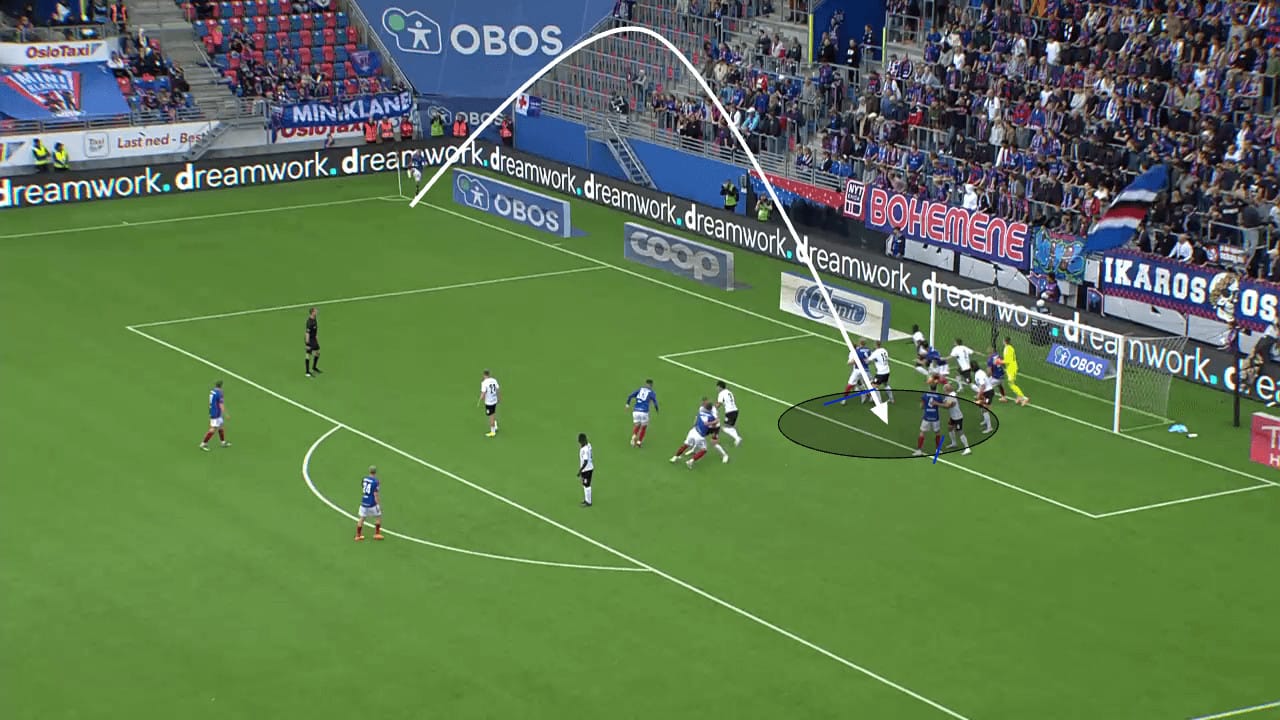
One of the most important aspects to remember when using floated crosses is to ensure the goalkeeper cannot come out to claim the ball. It is easier for goalkeepers to claim the ball when it is travelling through the air for such a long time, so Vålerenga have done well in preventing the goalkeeper from coming off their line, giving the attackers a fair chance at winning the aerial duel against the marker.
The club has done well in coordinating their attacks, with the player blocking the keeper, and knowing when to step in front/behind the keeper, depending on where the cross is being aimed at.
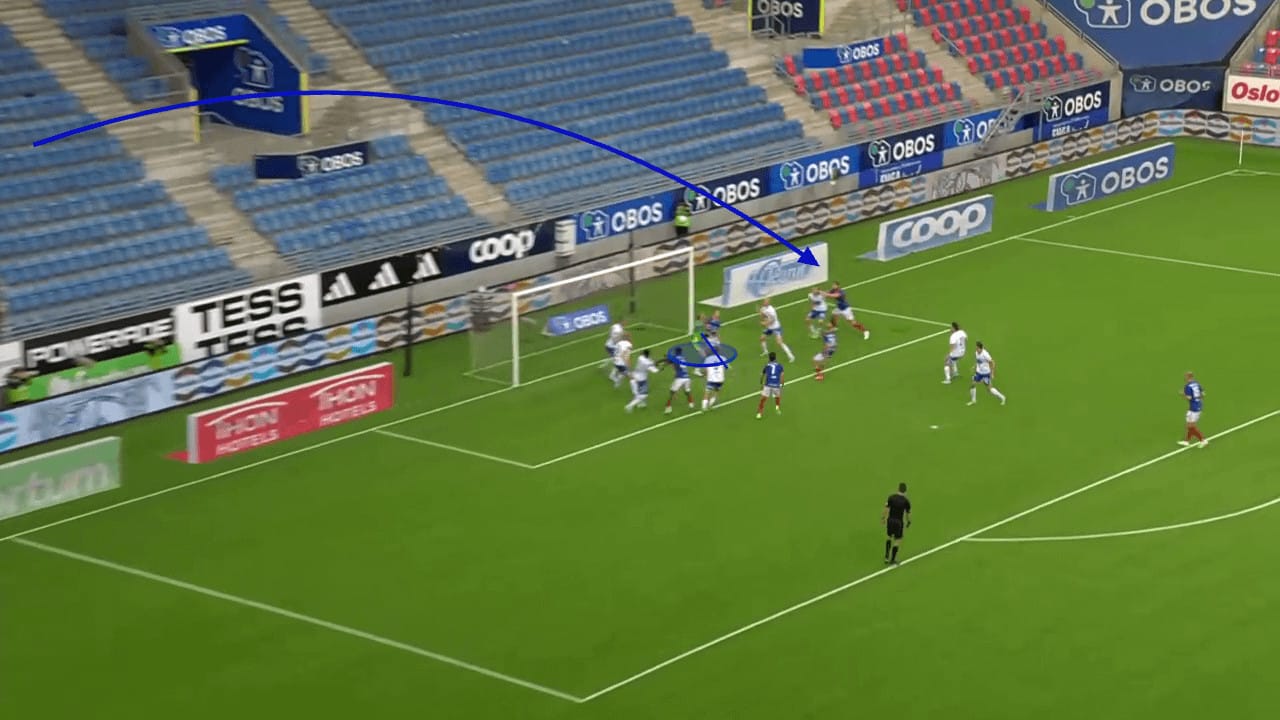
The use of screens has been a staple of Vålerenga’s corner routines in recent months. Screens have allowed the Norwegian side to access high-value areas around the six-yard box, allowing attackers more time and space to attack the ball at the optimal point.
However, due to the crowded scenes, Vålerenga usually face inside the six-yard box and the use of floated crosses, it is hard to gain clear, unopposed access inside the six-yard box, with a spare zonal defender always ready to come out and attack the ball, even if it moves away from their designated zone.
As seen in the example below, two screens from behind and in front of the target area are set to allow the attacker to enter the target area without any competition. Although the plan on paper seems strong, the floated delivery means that other zonal defenders have the time to react and attack the ball being crossed in.
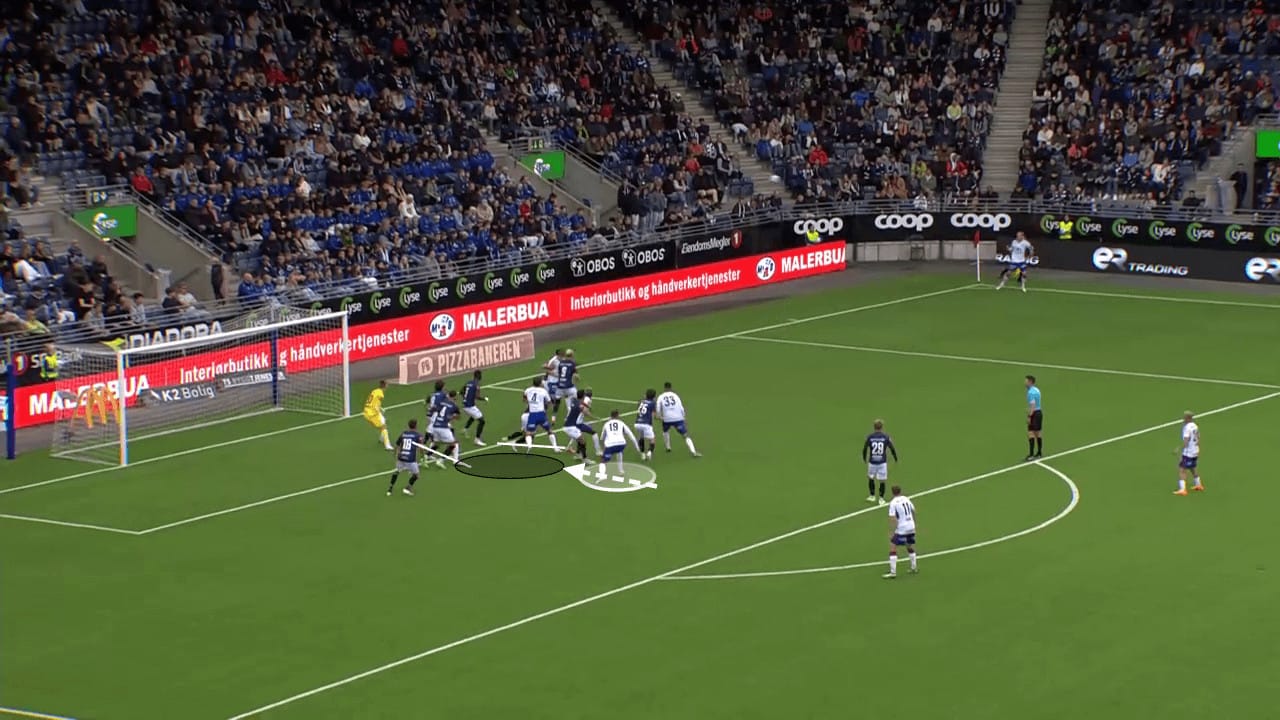
Something which Vålerenga have introduced into their set plays reasonably recently is the use of last-second movements, just before the corner is taken, to prevent defending sides from being able to react to changes in starting positions.
This method has been inspired by Brentford, whose use of the hive has left Premier League opponents unsure how to set up defensively. This means players start in one position, like in the example below, where the highlighted player seems eager to attack the ball.
This position makes the opponents think that this player will attack the cross; however, as the corner taker begins his run-up, the attacker sprints into a different starting position, where his role changed, and the defending side has no time to readjust their positioning.
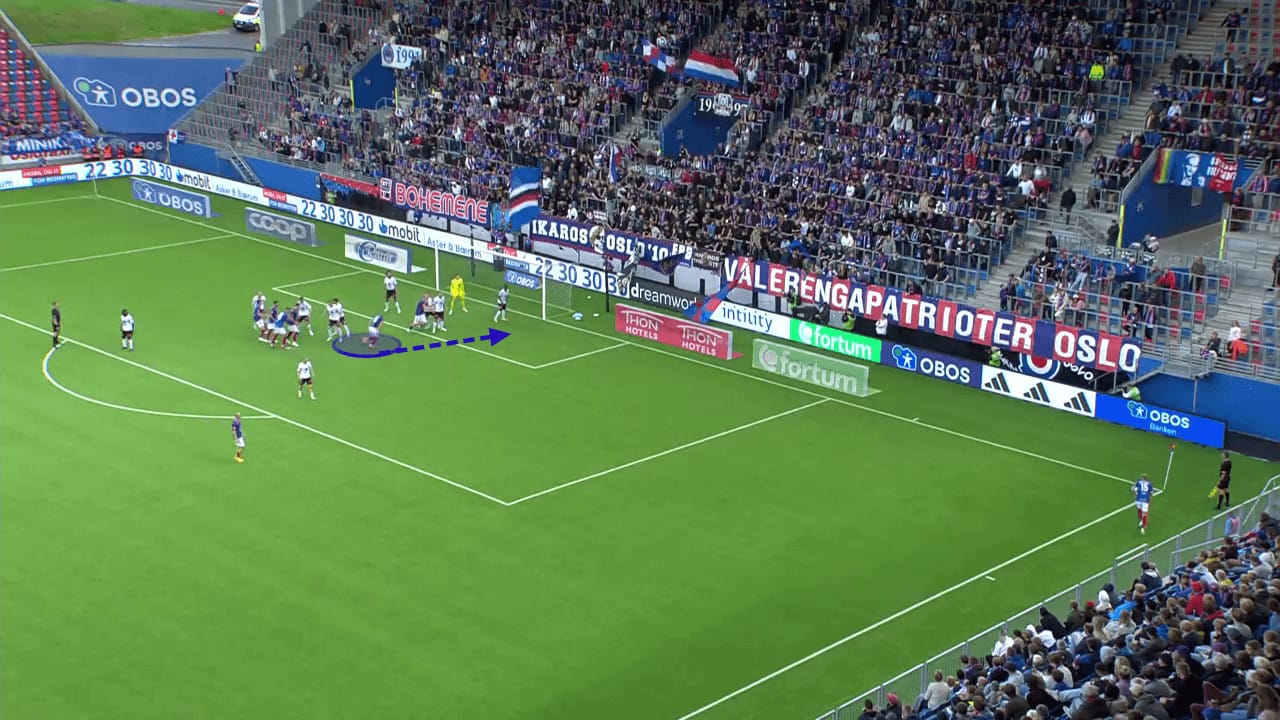
In the last second, the deep attacker sprints at the zonal defender and sets up a screen to prevent the zonal player from intercepting the cross. The late moment at which this action happens is designed in a manner in which the zonal defender can’t see the screen coming and, therefore, won’t be able to evade it.
Furthermore, the defending side is not expecting a screen to happen so late. So, the near side of the six-yard box becomes underguarded as the only two zonal defenders become immobilised, providing Vålerenga with straightforward access into the front side of the six-yard box. If that screen were to happen earlier, the attacker’s marker may have followed him closer and attempted to prevent the attacker from being able to set up the screen so easily.

With the heavy defensive presence that Vålerenga entice in almost every corner kick, they must attempt to switch up their routines to avoid becoming predictable. One way in which this can be made possible, and Vålerenga have shown glimpses of doing it already, has been through flick-ons from the near side of the six-yard box towards the back post.
The slightly shorter delivery of the corner kick drags players towards the near side of the six-yard box, away from the far side, which creates more space at the back post. Furthermore, the additional phase of play that this uses makes the possibility of a runner from deep arriving in space much more likely. However, this is something that is yet to be attempted by Vålerenga.

One of the most significant benefits of crowding the goal is that it forces the defensive side to begin to be trapped inside the six-yard box. Attacking the goal with five or six players will usually force all, bar one or two, defenders from entering their own six-yard box. As a result, even if the attacking side doesn’t make a clear connection with the ball, there remains a chance that the ball will bounce down and remain inside the penalty area.
With the entire defending team trapped inside the six-yard box, Vålerenga have a much higher chance of being the first to react to any second-phase opportunities that may occur.
As seen with the example below, when two players compete in an aerial duel, the ball is likely to trickle down of the back or shoulder or wrong part of the defender’s head and bounce down inside and around the six-yard box.
From this position, Vålerenga are likely to have three or four attackers positioned either on the six-yard box or around the penalty spot, who are all nearer the ball than any opposition defender could possibly be.
As a result, Vålerenga have been quite dangerous this season from these kinds of second-phase situations, where the attacking presence helps to keep these attacks alive.
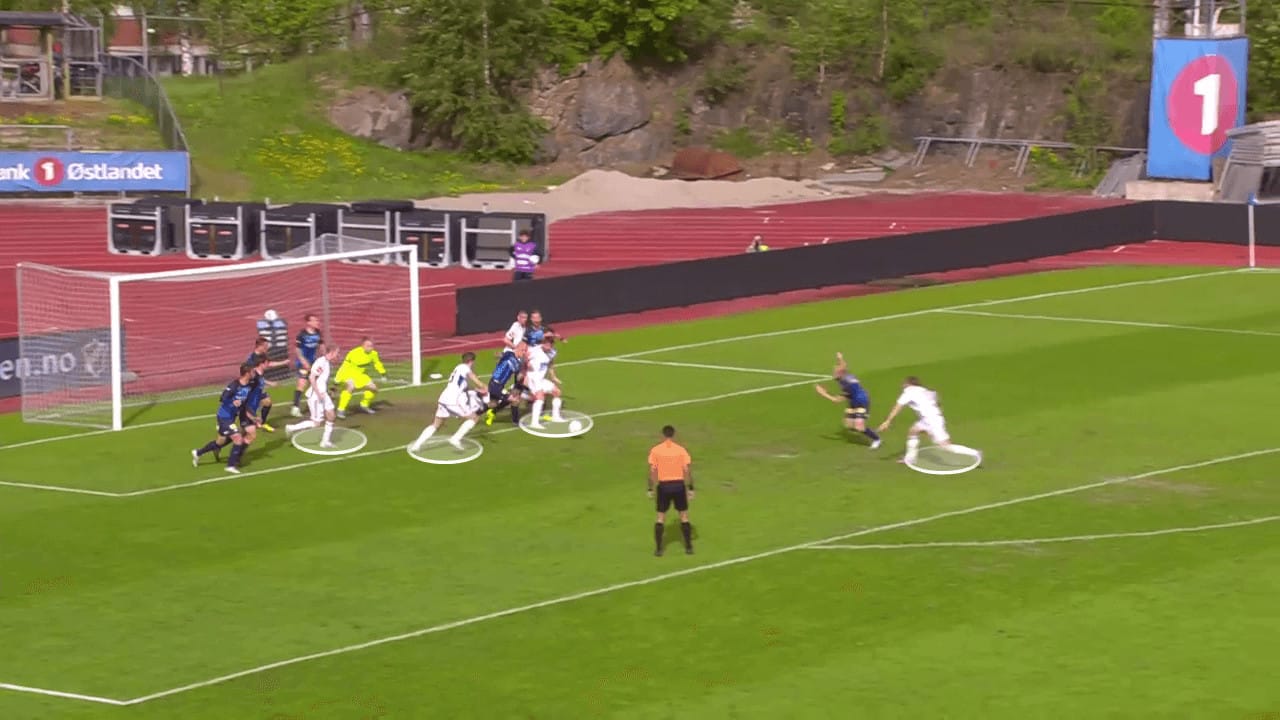
Benefits of the Whipped Cross
As mentioned previously, a lofted cross gives attackers and defenders an equal chance of timing and judging the right moment to attack the ball, leaving the winner of the ball to whoever is more potent in an aerial duel. However, at times, whipped crosses have been important to Vålerenga.
A whipped cross is much flatter and arrives at a location with speed. A quicker, flatter cross can be critical, especially when a big space has been recognised and needs to be attacked at the right time before a defensive side can begin to populate that zone with defenders.
In the moments where Vålerenga crowd the six-yard box, the space just outside the six-yard box becomes vacant and so can easily be accessed by a runner from deep. Still, the cross has to be delivered strongly enough to not allow a zonal defender from stepping out of position and clearing the ball.
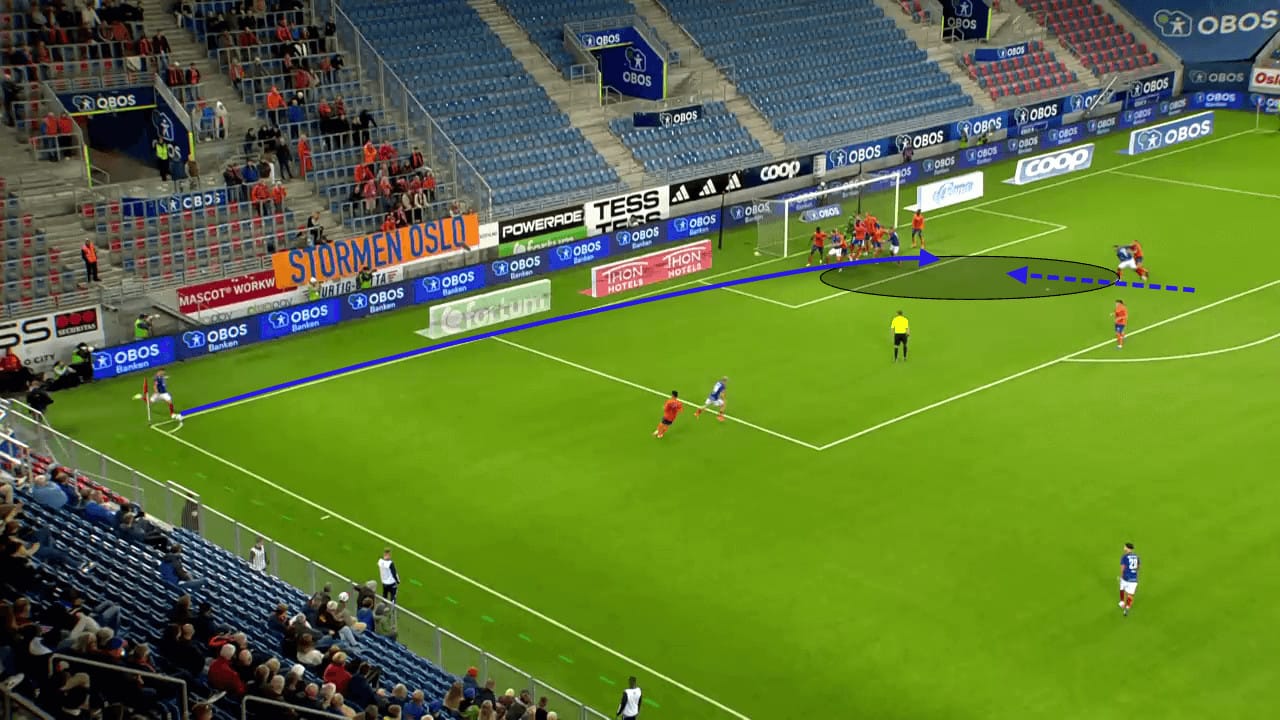
Areas for Improvement
While Vålerenga have had many promising signs, they have missed out on a few key details that could help increase their efficiency from corners. For example, we can see in the example below that the ball is floated into the target area, where 8-10 players are standing and waiting to attack the ball from a standing start.
In these situations, the players who can time their attack and the players with the best physical traits are the ones who are most likely to make the first contact. While I don’t have a deep knowledge of Vålerenga’s player’s physical qualities, it is safe to assume, after seeing all corners attacked this season, that they do not have a player who can dominate aerial duels consistently.
In these scenarios, Vålerenga could give themselves the advantage in the aerial duel by leaving someone in a slightly deeper position before they sprint into the target area at the last second, where they can use the sprinting momentum to attack the ball and gain the potential to reach a bigger height than would be possible with a standing start.
This could give Vålerenga easy access into the six-yard box for more corners, where any sort of header from a few yards should be enough to score goals from consistently.
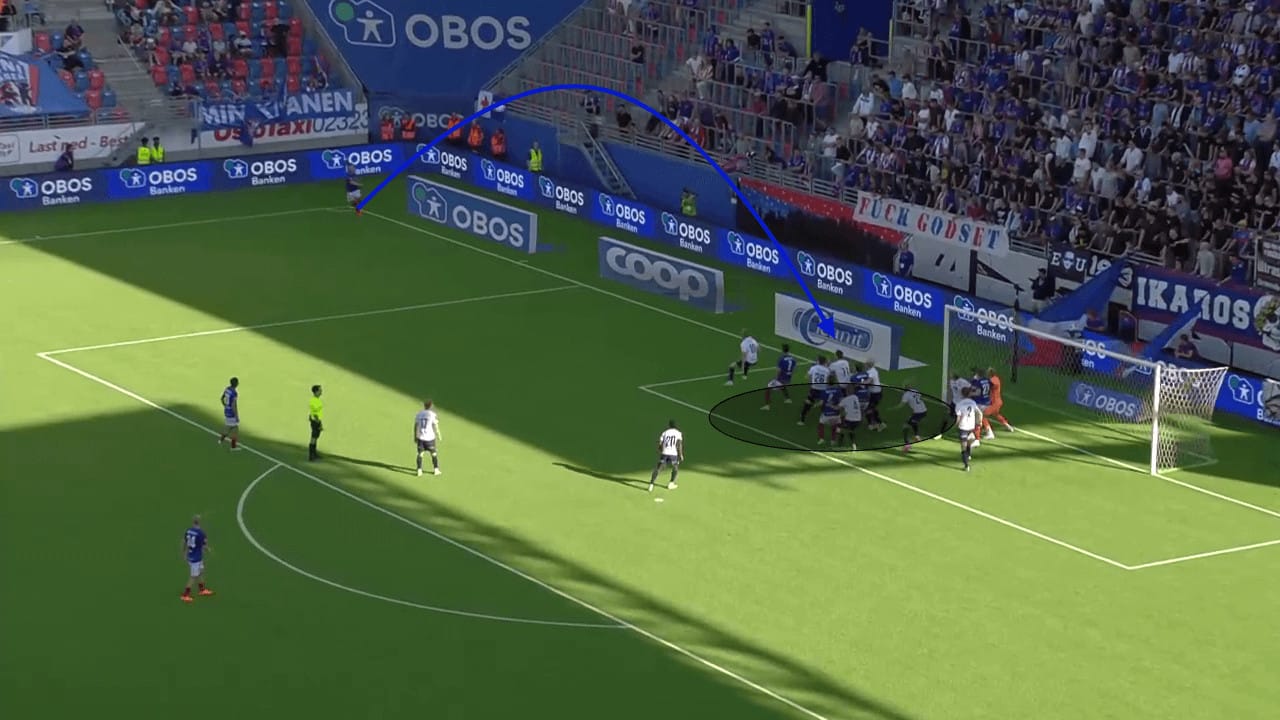
One other flaw in Vålerenga’s corners has been the lack of adaptation to the weaknesses in the defensive system of the opposition. Rather than reacting to any large areas of open space, Vålerenga continue to attempt similar things from corners even though past experience proves that attacking overly crowded regions of the six-yard box can be largely unsuccessful.
As seen in the example below, the attacker blocks the goalkeeper from moving towards the back side of the six-yard box, where there is a 1v1 in the large area shown in the green circle.
However, rather than delivering the ball into that area, where the attacker has the advantage by having so much space to attack, Vålerenga opt to return the ball into the area they feel more comfortable in, the front post, where five players from each side are located and waiting to attack the ball.
The crowded setting inside the red area leaves the aerial opportunities to luck, as no one has a clear advantage, even though the space at the back post is clear.
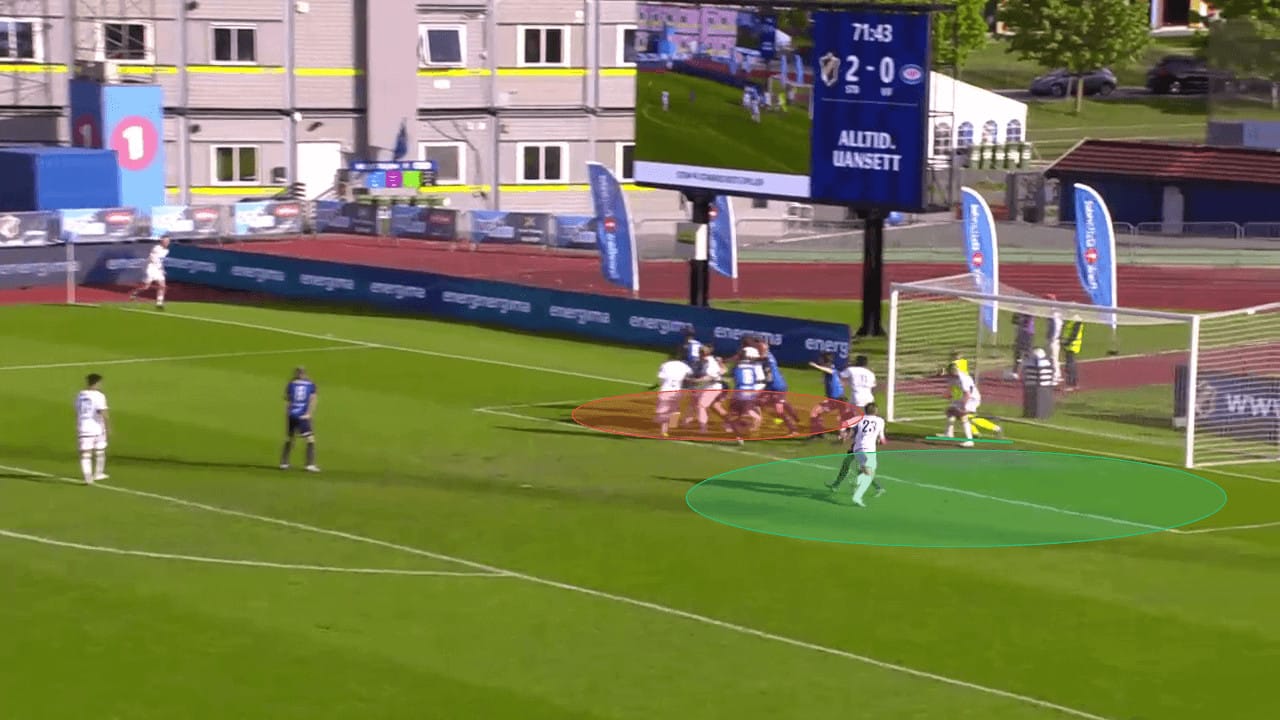
Conclusion
This tactical analysis has displayed the numerous benefits of using different types of crosses from corner kicks, which has benefited Vålerenga so far. From floated crosses to whipped ones, Vålerenga have shown their ability to vary routines to attempt to find the most space and also create space through the use of screens, although some inconsistent decision-making has meant that Vålerenga are not the most efficient team from corner kicks.
Potential solutions and hundreds of other options are listed above to ensure they retain their status in the top-flight Norwegian league by maximising what they get from corner kicks. With teams like Arsenal using similar starting positions, they could learn from them in the timings and precise locations of the screen usage, as well as taking inspiration from the women’s Swedish side in the decoy movements in these tight spaces to create those crucial few yards needed to get separation away from their markers.






Comments